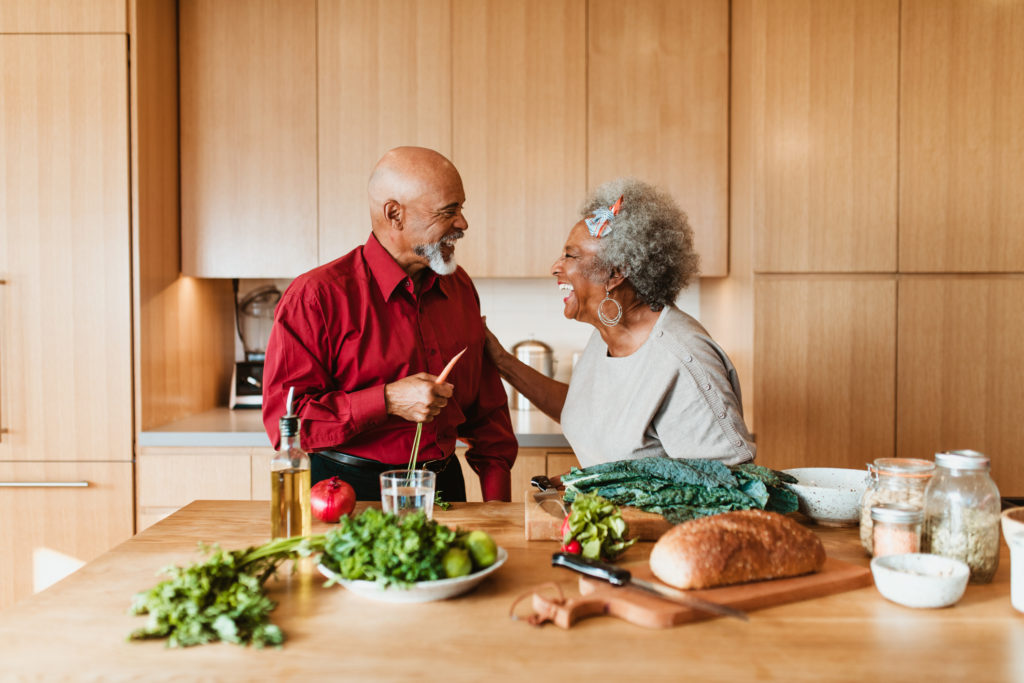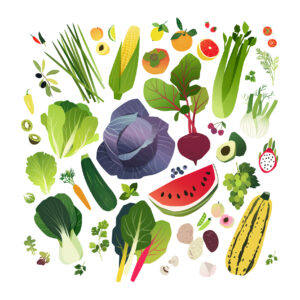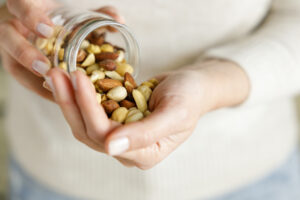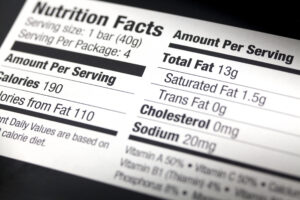
Managing blood pressure is not all about cutting things out of your diet — although it’s important to aim for less than 1,500 mg of sodium a day, especially if your blood pressure is high. Consider these heart-healthy things to add to your next meal:
- Eating two bananas each day can help reduce blood pressure by up to 10% due to the high levels of potassium known to relax blood vessel walls.
- Beans, beans, good for the heart… Nearly all beans are good for the heart and can help maintain healthy blood pressure levels — and white beans provide some of the most potent benefits of high potassium levels, fiber and magnesium.
- Fresh beets and beet juice are an excellent option for lowering blood pressure and reducing the risk of heart disease. The nitrates in beets can help relax and widen blood vessels so blood can flow more easily.
- Berries are great for lowering blood pressure. Their water-soluble pigments help reduce blood clots and relax blood vessels.

- Broccoli has potassium, magnesium and calcium — all minerals needed to regulate heart health. Studies show that eating one serving a day can lower blood pressure over time, but, like kale, it’s rich in vitamin k so if you take blood thinners, talk to your Primary Care Team.
- Don’t be a chicken — eat it! Choose baked chicken breast over red meat for a heart-healthy meal. White meat is lower in fat than dark meat cuts like legs and thighs. Marinated, baked chicken is heart-healthier than chicken grilled or fried at high heat or with high-fat butter, oil, salt or breading. Avoid chicken packaged with broth, saline or sodium solution.
- Cinnamon naturally relaxes blood vessels and is an anti-inflammatory, which can ease hypertension.
- The flavanol in dark chocolate can be good for high blood pressure, but moderation is key. Remember the 50/50 rule when you indulge: limit yourself to 50 calories of dark chocolate each day and make sure it contains at least 50% cocoa.
- The phenols in extra virgin olive oil have been shown to lower average systolic pressure between 2 and 3 mm Hg for those who consume it daily.
- Fermented foods such as yogurt, sauerkraut and kimchi help with digestion and reduce blood pressure. Some contain lots of salt, though, so check labels. Also watch for foods fermented with vinegar (instead of yeast). Vinegar slows bacteria growth so these preserved foods don’t offer the same health benefits.
- The phytochemicals in hibiscus tea help reduce systolic blood pressure. Drink hot or cold, but talk with your Primary Care Team or a dietician about how much is right for you based on your weight, age and health status.
- Dark, leafy kale contains high levels of magnesium, potassium, and vitamin C — all good for the heart. Ask your Primary Care Team, though, if you take blood thinners, because kale also contains vitamin K.

- Oats are low in sodium and high in fiber. Watch instant varieties, though. They often have lots of added salt.
- People who eat a diet high in protein may cut their risk for high blood pressure by as much as 40%! Choose low-fat, protein-rich foods like eggs, chicken, cottage cheese and oats, as well as plant-based options such as lentils, chickpeas, green peas and tofu.
- The superfood quinoa contains potassium and magnesium. It also aids in weight loss and helps control diabetes thanks to its high fiber content, low sodium and low fat.
- Skim milk may help reduce blood pressure and it’s a good source of calcium, potassium and magnesium — three of the most important ingredients for heart health.
- Soy contains isoflavones that help relax blood vessels and lower systolic blood pressure.
- Sweet potatoes contain lots of potassium and magnesium which help control blood pressure. They’re also high in fiber and low in sodium and fat.
- Tuna contains plenty of omega-3 fatty acids and is a good source of protein and iron. Opt for tuna filet over canned to reduce the amount of sodium.
- Whole grains such as brown rice, quinoa, wheat berries, amaranth and millet may help prevent stiffness or hardening of the arteries. And the phytochemicals and soluble fiber in these foods may lower your risk of developing hypertension.
Four places salt may hide in your diet

- Canned or bottled pasta sauces may contain more than 600 milligrams of sodium per ½ cup serving.
- Nuts provide “good” fats, fiber and protein, but many come covered in salt! Choose lightly salted or unsalted varieties.
- Processed lunch meats contain about 560 mg of sodium (or more) per 2-ounce serving — that’s just one slice!
- One fast food burger or sandwich alone can push you over the top on your daily salt allowance. Make your own at home or choose the salad (but limit the dressing!).
Read food labels for hidden sodium

If you are trying to follow a low-salt diet, you’ll want to cut down or avoid these ingredients, too:
- Monosodium glutamate (MSG)
- Baking soda (also known as sodium bicarbonate)
- Baking powder
- Disodium phosphate
- Sodium alginate
- Sodium citrate
- Sodium nitrate
Try to avoid products with more than 200 mg of sodium per serving. And be sure you know how many servings are in a package. Salt can add up quickly! Cut back on salt slowly and soon you may not miss it at all! In fact, some foods may start to taste too salty.
Lifestyle tips to manage blood pressure…

Relax! Stress stimulates the secretion of hormones that increase heart rate, narrow blood vessels and raise blood pressure.
Quit smoking! Nicotine can raise your blood pressure and heart rate, increases the risk of blood clots and raise the risk of heart attack or stroke. It can also narrow the arteries and make their walls harder and less flexible.
A vitamin D deficiency can lead to an increase in blood pressure. The best source of vitamin D is exposure to the sun. Aim for 800 IU a day if you are over age 70 (600 IU for adults under 70).
Sleep helps regulate stress hormones. Over time, sleeping less than five hours a day could lead to higher blood pressure, so don’t skimp on your ZZZZsssss.
Limit sugar! People who are overweight are more likely to have high blood pressure. Aim for no more than 25 grams of sugar a day if you’re a woman; 9 grams a day for men (sorry guys!). Cut out sweetened drinks and eat fewer foods with added sugar.
How low should you go?
It’s important to keep your blood pressure from getting too high, but abnormally low blood pressure (hypotension) can also be a concern. If your BP is lower than 90/60, check with your Primary Care Team to find out what’s going on. You may be dehydrated, or it may signal an underlying problem that needs to be addressed.
